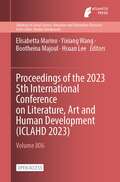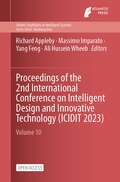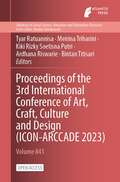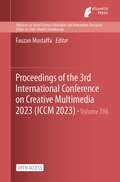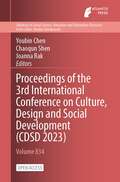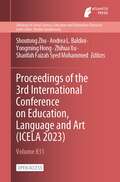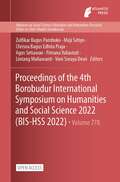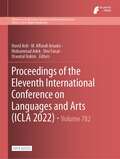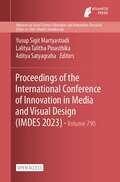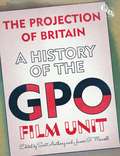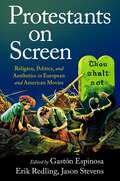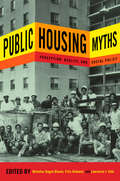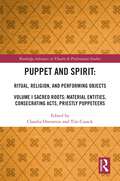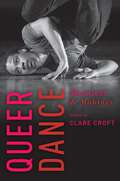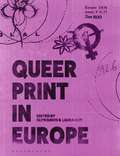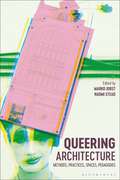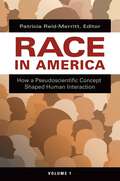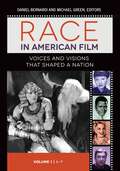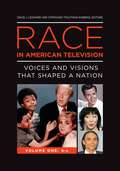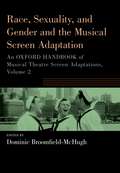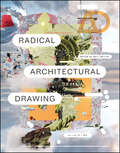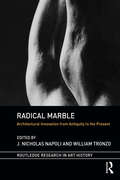- Table View
- List View
Proceedings of the 2023 5th International Conference on Literature, Art and Human Development (Advances in Social Science, Education and Humanities Research #806)
This is an open access book. The 5th International Conference on Literature, Art and Human Development (ICLAHD 2023) was held on October 20-22, 2023 in Chengdu, China. Literature is an art that reflects the social life and expresses the author's thoughts and feelings by shaping images with language as the means. Art is a social ideology that uses images to reflect reality but is more typical than reality. It includes literature, painting, sculpture, architecture, music and so on. Literature is one of the forms of expression belonging to art. Literature and art are difficult to separate by a clear boundary, but also for people to create more infinite imagination space. ICLAHD 2023 is to bring together innovative academics and industrial experts in the field of Literature, Art and Human Development research to a common forum. The primary goal of the conference is to promote research and developmental activities in Literature, Art and Human Development research and another goal is to promote scientific information interchange between researchers, developers, engineers, students, and practitioners working all around the world. The conference will be held every year to make it an ideal platform for people to share views and experiences in Literature, Art and Human Development research and related areas.
Proceedings of the 2nd International Conference on Intelligent Design and Innovative Technology (Atlantis Highlights in Intelligent Systems #10)
This is an open access book.The 2nd International Conference on Intelligent Design and Innovative Technology (ICIDIT 2023) will be held in Chengdu, China from August 04 to 06, 2023.This conference mainly focuses on the latest research on "Intelligent Design and Innovative Technology". This conference brings together experts, scholars, researchers and relevant practitioners in this field from all over the world to share research results, discuss hot issues, and provide participants with cutting-edge scientific and technological information, so that you can timely understand the development trends of the industry and master the latest technologies, broaden research horizons and promote academic progress.
Proceedings of the 3rd International Conference of Art, Craft, Culture and Design (Advances in Social Science, Education and Humanities Research #841)
This is an open access book. Globally, 2023 marks the mid-point of the 2030 UN Sustainable Development Goals agenda, yet we are still struggling to rebuild and respond to current conditions in every aspect. The future remains unpredictable and never have we been presented with such complexity as what we are facing today. As we continue to live in this age of Anthropocene, we carry on the legacy of being the cause of both destruction and rehabilitation. These ambiguous roles manifest on every occasion when we try to solve a problem. Consequently, we grow to feel more anxious and innovation seems to no longer be possible. Creativity is at the heart of what we do as artists, makers, and designers. For us, crisis creates opportunities to open up other pathways in this ever-changing world. With its fluidity, art, craft, culture, and design discipline has significant roles in facilitating changes everywhere through its capability to connect humans, nature, and everything in between. At this conference, we are inviting you to explore the theme of “Fluid & Ubiquitous”, which is elaborated into various sub-themes that encompass some key ideas: Care Systemic Design Cross-cultural Identity Object as an Agency Transmateriality
Proceedings of the 3rd International Conference on Creative Multimedia 2023 (Advances in Social Science, Education and Humanities Research #786)
This is an open access book.The Faculty of Creative Multimedia (FCM), Multimedia University will hold the 3rd International Conference on Creative Multimedia 2023 (ICCM2023) on 26–28 July 2023 (Virtual Conference). ICCM2023 invites prospective authors to take part by submitting research papers in pursuing the vibrant discourse of creative multimedia. ICCM2023 aims to bring together related research scholars, educators, practitioners, policymakers, enthusiasts, fellow students, and design entrepreneurs from various perspectives, disciplines, and fields to share and exchange their research experiences and results on all aspects of arts, design, and creative media technologies. ICCM2023 embraces possibilities, provides an interdisciplinary forum for all stakeholders to present and discuss current trends, innovations, and concerns, as well as practical issues and solutions in the field of creative multimedia. We welcome high-quality research contributions dealing with original and unpublished results on fundamental, conceptual, empirical and experimental work in all areas of arts, design and creative media technologies.
Proceedings of the 3rd International Conference on Culture, Design and Social Development (Advances in Social Science, Education and Humanities Research #834)
This is an open access book.Culture is the spiritual activity and product of human society relative to economy and politics. The traditional concept of human beings believes that culture is a social phenomenon, a product created by human beings for a long time, and at the same time a historical phenomenon, which is the accumulation of human society and history.The technical, economical and cultural nature of art design determines that only with high social and economic development can art and culture flourish. Art design is the product of the combination of art and technology. Art design is also a kind of productivity, which promotes the development of social economy. As a driving factor for social and economic development, design art will also better serve the social economy with its own more perfect operating system.The purpose of CDSD 2023 is to provide an international platform for experts, scholars, engineers and technicians, and technical R&D personnel engaged in related fields such as "culture", "design" and "social development", to share scientific research results, broaden research ideas, collide with new ideas, and strengthen academic research, and to explore the key challenges and research directions faced by the development of this field, and promote the industrialization cooperation of academic achievements. Experts, scholars, business people and other relevant personnel from universities and research institutions at home and abroad are cordially invited to attend and exchange.
Proceedings of the 3rd International Conference on Education, Language and Art (Advances in Social Science, Education and Humanities Research #831)
This is an open access book. About Education: In a narrow sense refers to specially organized school education; in a broader sense, it refers to the social and practical activities that affect the physical and mental development of people. The significance of education is to make people understand the responsibility and righteousness of human society as a person. Only when a person understands his responsibilities and obligations can he become a useful person. The premise is that only those who fulfill their responsibilities and obligations can become a useful person. This is the purpose of education.About Language: Language is a product of a certain society, a phenomenon unique to society, there is no such thing as language outside of society, there is no society, there is no language, the development of language by social constraints, language with the emergence of society, with the development of society and development, with the death of society and death.Language is the bridge and link between members of society, is the tool for mutual communication and expression of ideas, society can not be separated from language, without language, society will collapse and cease to exist.About Art: The value of art, human core, people's aesthetic attitude determines the value of art. Art is a spiritual product, closely related to our life, it can make enrich our spiritual life. The value of art is not only limited to life, it has great value in society, history and business. As an appreciator, we perceive the beauty of art works through images, sounds, experiences, observations, imaginations, and emotions in multiple dimensions, so as to obtain spiritual and emotional pleasure.
Proceedings of the 4th Borobudur International Symposium on Humanities and Social Science 2022 (Advances in Social Science, Education and Humanities Research #778)
This is an open access book.Related to the big theme of the SDGs reinforcement at our previous conference, we try to invite all academics and researchers around the world to participate in the 4th Borobudur International Symposium 2022 (4thBIS 2022). As we know, the COVID-19 pandemic and its impact on all the 17 SDGs have demonstrated how what began as a health catastrophe swiftly transformed into a human, socioeconomic and environmental crisis. The 4th BIS brought up “The Innovation Chain: A Contribution to Society and Industry” as the main theme to respond this condition. This conference is expected to support the UN Agenda. Additionally, this conference will also provide avenues for participants to exchange ideas and network with each other as well as domain experts from their fields. Overall, this event is aimed at professionals across all spheres of technology and engineering including the experienced, inexperienced, and students as well. The conference will be held virtually on Wednesday, December 21st, 2022 in Magelang, Central Java, Indonesia.
Proceedings of the Eleventh International Conference on Languages and Arts (Advances in Social Science, Education and Humanities Research #782)
This is an open access book.Industrial Revolution 4.0. is a global acceleration era in creating a masterpiece to accelerate economic achievement in a country. This era is a challenge for all of us particularly in the field of language, literature, arts and education. In order to respond this challenge, creative industry should take and play important role to bring benefit for our country. For this purpose the 11th International Conference on Language and Arts (ICLA-11) invites researchers, teachers/lecturers, and students to come as presenters or participants. This year theme is “Current Issues in Collaborative Learning and Digital Technology in Languages and Arts”.
Proceedings of the International Conference of Innovation in Media and Visual Design (Advances in Social Science, Education and Humanities Research #790)
This is an open access book. The existence of digital virtuality in the midst of an information society has become an integral component of the human existential condition. New spaces for exploring the engagement of design and its impact on humans in digital virtuality continue to grow exponentially. Innovation in Media and Visual Design (IMDES 2023) welcomes thoughts and works of academics, researchers and practitioners related to virtuality, design, technology, mass media and people from various perspectives, disciplines and fields of knowledge.
The Projection of Britain: A History of the GPO Film Unit
The General Post Office (GPO) Film Unit sat at the creative epicentre of Britain in the 1930s. It nurtured a vital crop of artistic talent, built a forum for a new kind of cinematic address and created Britain's first self-consciously national cinema. In 2011, UNESCO added its work to the UK Memory of the World Register, recognising its status as part of Britain's cultural heritage. Elements of the GPO Film Unit's story are well known: John Grierson's development of documentary cinema; the influence of Mass Observation and Surrealism on its cinematic vision; the Watt–Auden–Britten collaboration Night Mail. The Projection of Britain: A History of the GPO Film Unit brings together primary materials and critical appraisals to revisit, re-contextualise and revitalise these seminal moments in British cinema. Here, the insights of an archivist, a musicologist, a design historian, a sports historian, a geographer and a postman – among others – have been edited into a rich critical archaeology of a compelling moment in cinematic history. Interspersed with these essays are primary materials – memoirs, magazine articles, posters and government documents – that detail everything from Alberto Cavalcanti's vision for the documentary movement to a claim for the clothes Humphrey Jennings lost while shooting on location. In recent years there has been a resurgence of interest in the GPO Film Unit and its work, on the big screen, in DVD boxsets and on the web. The Projection of Britain ties together the Unit's diverse artistic, historical and cultural threads into an essential one-stop resource. Provocative, imaginative and ambitious, this expansive study is the definitive companion to an extraordinary episode in cinematic history.
Protestants on Screen: Religion, Politics and Aesthetics in European and American Movies
Protestants on Screen explores the Protestant contributions to American and European film from the silent era to the present day. The authors analyze how Protestant filmmakers, beliefs, theology, symbols, sensibilities, and cultural patterns have shaped the history of film. Challenging the stereotype of Protestants as world-denouncing-and-defying puritans and iconoclasts who stood in the way of film's maturation as an art, the authors contend that Protestants were among the key catalysts in the origins and development of film, bringing an identifiably Protestant aesthetic to the medium. The essays in this volume track key Protestant themes like faith and doubt, sin and depravity, biblical literalism, personal conversion and personal redemption, holiness and sanctification, moralism and pietism, Providence and secularism, apocalypticism, righteousness and justice, religion and race, the priesthood of all believers and its offshoots-democratization and individualism. Protestants, the essays in this volume demonstrate, helped birth and shape the film industry and harness the power of motion pictures for spiritual instruction, edification, and cultural influence.
Proximity as Method: Concepts for Coexistence in the Global Past and Present (Transdisciplinary Souths)
This book examines proximity as a benchmarked concept that can be deployed across a range of humanities disciplines to rethink the ways in which existences in the world are always already coexistences – and to parse the heuristic, ethical, epistemological, praxeological consequences of this recognition.The volume:- Brings together diverse theoretical approaches and utilizes a range of methodological instruments – conceptual, textual-analytic (whether in the realm of literary or religious studies, or theology or law), archival, digital, sociological or politological;- Includes empirical case-studies that allow calibrated and scaled exemplifications;- Launches forays onto unexplored conceptual terrain, or call into question hallowed truths of scholarly procedure.The volume will be essential reading for students and early researchers in the social sciences and the humanities.
Public Housing Myths: Perception, Reality, and Social Policy
Popular opinion holds that public housing is a failure; so what more needs to be said about seventy-five years of dashed hopes and destructive policies? Over the past decade, however, historians and social scientists have quietly exploded the common wisdom about public housing. Public Housing Myths pulls together these fresh perspectives and unexpected findings into a single volume to provide an updated, panoramic view of public housing. With eleven chapters by prominent scholars, the collection not only covers a groundbreaking range of public housing issues transnationally but also does so in a revisionist and provocative manner. With students in mind, Public Housing Myths is organized thematically around popular preconceptions and myths about the policies surrounding big city public housing, the places themselves, and the people who call them home. The authors challenge narratives of inevitable decline, architectural determinism, and rampant criminality that have shaped earlier accounts and still dominate public perception.
Puppet and Spirit: Volume I Sacred Roots: Material Entities, Consecrating Acts, Priestly Puppeteers (Routledge Advances in Theatre & Performance Studies)
This anthology of essays aims to explore the many types of relationships that exist between puppets, broadly speaking, and the immaterial world. The allure of the puppet goes beyond its material presence as, historically and throughout the globe, many uses of puppets and related objects have expressed and capitalized on their posited connections to other realms or ability to serve as vessels or conduits for immaterial presence. The flip side of the puppet’s troubling uncanniness is precisely the possibilities it represents for connecting to discarnate realities. Where do we see such connections? How do we describe, analyze, and theorize these relationships? The first of two volumes, this book focuses on these questions in relation to long-established, traditional practices using puppets, devotional objects, and related items with sacred aspects to them or that perform ritual roles. Looking at performance traditions and artifacts from China, Indonesia, Korea, Mali, Brazil, Iran, Germany, and elsewhere, the essays from scholars and practitioners provide a range of useful models and critical vocabularies for addressing the ritual and spiritual aspects of puppet performance, further expanding the growing understanding and appreciation of puppetry generally. This book, along with its companion volume, offers, for the first time, robust coverage of this subject from a diversity of voices, examples, and perspectives.
Quebec Cinema in the 21st Century: Transcending the National (Contemporary French and Francophone Cultures #95)
This collection of ten chapters and three original interviews with Québécois filmmakers focuses on the past two decades of Quebec cinema and takes an in-depth look at a (primarily) Montreal-based filmmaking industry whose increasingly diverse productions continue to resist the hegemony of Hollywood and to exist as a visible and successful hub of French-language – and ever more multilingual – cinema in North America. This volume picks up where Bill Marshall’s 2001 Quebec National Cinema ends to investigate the inherently global nature of Quebec’s film industry and cinematic output since the beginning of the new millennium. Through their analyses of contemporary films (Une colonie, Avant les rues, Bon cop, bad cop, Les Affamés, Tom à la ferme, Uvanga, among others), directors (including Xavier Dolan, Denis Côté, Sophie Desrape, Chloé Robichaud, Jean-Marc Vallée, and Monia Chokri) and genres (such as the buddy comedy and the zombie film), our authors examine the growing tension between Quebec cinema as a “national cinema” and as an art form that reflects the transnationalism of today’s world, a new form of fluidity of individual experiences, and an increasing on-screen presence of Indigenous subjects, both within and outside the borders of the province. The book concludes with specially conducted interviews with filmmakers Denis Chouinard, Bachir Bensadekk, and Marie-Hélène Cousineau, who provide their views and insights on contemporary Quebec filmmaking.
Queer Dance
If we imagine multiple ways of being together, how might that shift choreographic practices and help us imagine ways groups assemble in more varied ways than just pairing another man with another woman? How might dancing queerly ask us to imagine futures through something other than heterosexuality and reproduction? How does challenging gender binaries always mean thinking about race, thinking about the postcolonial, about ableism? What are the arbitrary rules structuring dance in all its arenas, whether concert and social or commercial and competition, and how do we see those invisible structures and work to disrupt them? Queer Dance brings together artists and scholars in a multi-platformed project-book, accompanying website, and live performance series to ask, "How does dancing queerly progressively challenge us?" The artists and scholars whose writing appears in the book and whose performances and filmed interviews appear online stage a range of genders and sexualities that challenge and destabilize social norms. Engaging with dance making, dance scholarship, queer studies, and other fields, Queer Dance asks how identities, communities, and artmaking and scholarly practices might consider what queer work the body does and can do. There is great power in claiming queerness in the press of bodies touching or in the exceeding of the body best measured in sweat and exhaustion. How does queerness exist in the realm of affect and touch, and what then might we explore about queerness through these pleasurable and complex bodily ways of knowing?
Queer Print in Europe
How have radical print cultures fostered and preserved queer lived experience from the 1960s to the present? What alternative stories about queer life across Europe can visual material reveal? Queer Print in Europe is the first book devoted to the exploration of queer print cultures in Europe, following the birth of an international gay rights movement in the late 1960s. By unearthing these ephemeral paper documents from archives and personal collections, including materials that have been out of circulation since they were first distributed, this book examines how the production and dissemination of queer print intersected with the emergence of LGBTQ+ activism within specific national contexts. This vital contribution to queer history explores borders and political movements, and the ways in which these materials contributed, through their international circulation, to the creation of a 'post-national' queer community.Illustrated throughout with examples of manifestos, flyers, posters, zines and other forms of print media, it features interviews with those responsible for making, distributing or archiving queer print, alongside a series of new theoretical essays that set particular publications and the individuals and groups that produced them in context. The book isolates specific instances of queer print media and scrutinises their design aesthetics, identifying both the significant contribution that queer print has made to histories of LGBTQ+ struggle and to the history of print design.
Queering Architecture: Methods, Practices, Spaces, Pedagogies
Featuring contributions from a range of significant voices in the field, this volume renews the conversation around what it means to speak of the 'queer' in the context of architecture, and offers a fresh take on the methodological and epistemological challenges this poses to the discipline of architectural theory. Architecture as a discipline, a profession and an applied practice, is always subordinate to its own conceptual framework, which is one of orderliness. It refers to buildings, but also to infrastructures of thought and knowledge, to conventions and taxonomies, to structures of governance, hierarchies of power and systems of administration. How, then, can one look at queering architectural discourse when the very term 'queer', celebrated for its elusive, slippery nature, resists and attacks such order?Divided into four subsections, the essays in this anthology each purse a distinct line of inquiry - methods, practices, spaces, and pedagogies - in order to help particularize the proposed queering of architecture. They demonstrate the paradoxical nature of the endeavour from a diverse range of perspectives – from the questions of mapping queer theory in architecture; to the issues of queer architectural archives, or lack thereof; to the non-Western linguistic challenges to the very term queer alongside decolonial approaches to architecture via indigeneity and landscape.Queering Architecture not only provides a bold challenge to the normative methods employed in architectural discourse but addresses the paradoxical nature of establishing 'queer' methodologies in itself. Essential reading for architectural and queer theorists.
Race in America [2 volumes]: How a Pseudoscientific Concept Shaped Human Interaction [2 volumes]
Focusing on the socially explosive concept of race and how it has affected human interactions, this work examines the social and scientific definitions of race, the implementation of racialized policies and practices, the historical and contemporary manifestations of the use of race in shaping social interactions within U.S. society and elsewhere, and where our notions of race will likely lead.More than a decade and a half into the 21st century, the term "race" remains one of the most emotionally charged words in the human language. While race can be defined as "a local geographic or global human population distinguished as a more or less distinct group by genetically transmitted physical characteristics," the concept of race can better be understood as a socially defined construct—a system of human classification that carries tremendous weight, yet is complex, confusing, contradictory, controversial, and imprecise. This collection of essays focuses on the socially explosive concept of race and how it has shaped human interactions across civilization. The contributed work examines the social and scientific definitions of race, the implementation of racialized policies and practices, and the historical and contemporary manifestations of the use of race in shaping social interactions (primarily) in the United States—a nation where the concept of race is further convoluted by the nation's extensive history of miscegenation as well as the continuous flow of immigrant groups from countries whose definitions of race, ethnicity, and culture remain fluid. Readers will gain insights into subjects such as how we as individuals define ourselves through concepts of race, how race affects social privilege, "color blindness" as an obstacle to social change, legal perspectives on race, racialization of the religious experience, and how the media perpetuates racial stereotypes.
Race in American Film [3 volumes]: Voices and Visions That Shaped a Nation [3 volumes]
This expansive three-volume set investigates racial representation in film, providing an authoritative cross-section of the most racially significant films, actors, directors, and movements in American cinematic history.Hollywood has always reflected current American cultural norms and ideas. As such, film provides a window into attitudes about race and ethnicity over the last century. This comprehensive set provides information on hundreds of films chosen based on scholarly consensus of their importance regarding the subject, examining aspects of race and ethnicity in American film through the historical context, themes, and people involved.This three-volume set highlights the most important films and artists of the era, identifying films, actors, or characterizations that were considered racist, were tremendously popular or hugely influential, attempted to be progressive, or some combination thereof. Readers will not only learn basic information about each subject but also be able to contextualize it culturally, historically, and in terms of its reception to understand what average moviegoers thought about the subject at the time of its popularity—and grasp how the subject is perceived now through the lens of history.
Race in American Television [2 volumes]: Voices and Visions That Shaped a Nation [2 volumes]
This two-volume encyclopedia explores representations of people of color in American television. It includes overview essays on early, classic, and contemporary television and the challenges for, developments related to, and participation of minorities on and behind the screen.Covering five decades, this encyclopedia highlights how race has shaped television and how television has shaped society. Offering critical analysis of moments and themes throughout television history, Race in American Television shines a spotlight on key artists of color, prominent shows, and the debates that have defined television since the civil rights movement. This book also examines the ways in which television has been a site for both reproduction of stereotypes and resistance to them, providing a basis for discussion about racial issues in the United States.This set provides a significant resource for students and fans of television alike, not only educating but also empowering readers with the necessary tools to consume and watch the small screen and explore its impact on the evolution of racial and ethnic stereotypes in U.S. culture and beyond. Understanding the history of American television contributes to deeper knowledge and potentially helps us to better apprehend the plethora of diverse shows and programs on Netflix, Hulu, YouTube, and other platforms today.
Race, Sexuality, and Gender and the Musical Screen Adaptation: An Oxford Handbook of Musical Theatre Screen Adaptations, Volume 2 (OXFORD HANDBOOKS SERIES)
Hollywood's conversion to sound in the 1920s created an early peak in the film musical, following the immense success of The Jazz Singer. The opportunity to synchronize moving pictures with a soundtrack suited the musical in particular, since the heightened experience of song and dance drew attention to the novelty of the technological development. Until the near-collapse of the genre in the 1960s, the film musical enjoyed around thirty years of development, as landmarks such as The Wizard of Oz, Meet Me in St. Louis, Singin' in the Rain, and Gigi showed the exciting possibilities of putting musicals on the silver screen. The second of three volumes, Race, Sexuality, and Gender and the Musical Screen Adaptation: An Oxford Handbook, traces how the genre of the stage-to-screen musical has evolved, focusing in particular of issues of race, gender and sexuality. Enduringly popular adaptations such as Kiss Me Kate and Pal Joey are considered through the lens of identity, while several chapters consider how different adaptations of the same stage musical reflect shifting historical contexts. Together, the chapters incite lively debates about the process of adapting Broadway for the big screen and provide models for future studies. Volume I: The Politics of the Musical Theatre Screen Adaptation Volume II: Race, Sexuality, and Gender and the Musical Screen Adaptation Volume III: Stars, Studios, and the Musical Theatre Screen Adaptation
Radical Architectural Drawing (Architectural Design)
There is a newfound interest in architectural drawing. Some of the most forward-looking architects worldwide are reinventing it to discover the radical possibilities of contemporary architecture as a rich mix of the virtual and the actual. Architectural drawing is adapting to compensate for these new changes to the discipline, and is being used to speculate on new paradigms of space and representation. This AD seeks to showcase the architects who are pushing the envelope of drawing in extraordinary ways, and their insights into architecture&’s future spatial dexterity. The issue is built around an international group of architects involved in an ongoing KU Leuven Faculty of Architecture international drawing research project, who are creating new drawing methodologies in new and exciting realms. Their projects are written about from the perspective of architectural representation by critics and commentators from across the globe, illustrating a cornucopia of graphic verve and talent in this highly contemporary and thought-provoking issue. Contributors: Aaron Betsky, Penelope Haralambidou, Ulrika Karlsson, Michael McGarry, Nicholas de Monchaux, Ricardo de Ostos, Alberto Pérez-Gómez, Peter Salter, Chris L Smith, Wolfgang Tschapeller, Sarah de Villiers, Robin Wilson, and Jason Young. Drawings by: Bryan Cantley, Nat Chard, Peter Cook, Riet Eeckhout, CJ Lim, Perry Kulper, Metis (Mark Dorrian and Adrian Hawker), Shaun Murray, Smout Allen, Neil Spiller, Nada Subotincic, Michael Webb, Mark West, and Michael Young.
Radical Marble: Architectural Innovation from Antiquity to the Present (Routledge Research in Art History)
Marble is one of the great veins through the architectural tradition and fundamental building block of the Mediterranean world, from the Parthenon of mid-fifth century Athens, which was constructed of pentelic marble, to Justinian’s Hagia Sophia in Constantinople and the Renaissance and Baroque basilica of St. Peter’s in the Vatican. Scholarship has done much in recent years to reveal the ways and means of marble. The use of colored marbles in Roman imperial architecture has recently been the subject of a major exhibition and the medieval traditions of marble working have been studied in the context of family genealogies and social networks. In addition, architectural historians have revealed the meanings evoked by marble revetted and paved surfaces, from Heavenly Jerusalem to frozen water. The present volume builds upon the body of recent and emerging research - from antiquity to the present day - to embrace a global focus and address the more unusual (or at least unexpected) uses, meanings, and aesthetic appeal of marble. It presents instances where the use of marble has revolutionized architectural practice, suggested new meaning for the built environment, or defined a new aesthetic - moments where this well-known material has been put to radical use.
Radical Marble: Architectural Innovation from Antiquity to the Present (Routledge Research in Art History)
Marble is one of the great veins through the architectural tradition and fundamental building block of the Mediterranean world, from the Parthenon of mid-fifth century Athens, which was constructed of pentelic marble, to Justinian’s Hagia Sophia in Constantinople and the Renaissance and Baroque basilica of St. Peter’s in the Vatican. Scholarship has done much in recent years to reveal the ways and means of marble. The use of colored marbles in Roman imperial architecture has recently been the subject of a major exhibition and the medieval traditions of marble working have been studied in the context of family genealogies and social networks. In addition, architectural historians have revealed the meanings evoked by marble revetted and paved surfaces, from Heavenly Jerusalem to frozen water. The present volume builds upon the body of recent and emerging research - from antiquity to the present day - to embrace a global focus and address the more unusual (or at least unexpected) uses, meanings, and aesthetic appeal of marble. It presents instances where the use of marble has revolutionized architectural practice, suggested new meaning for the built environment, or defined a new aesthetic - moments where this well-known material has been put to radical use.
